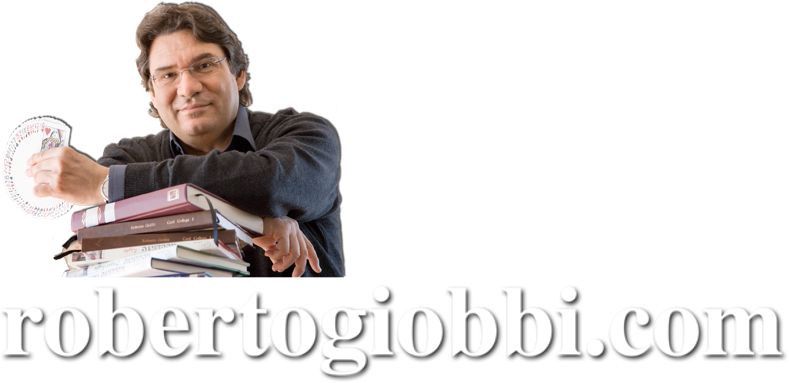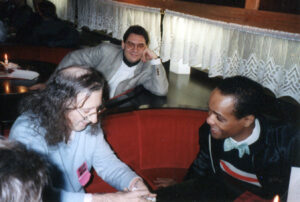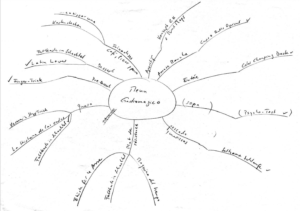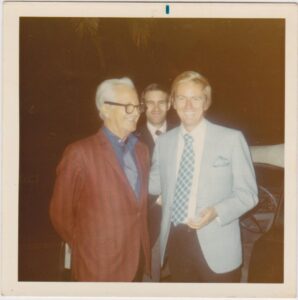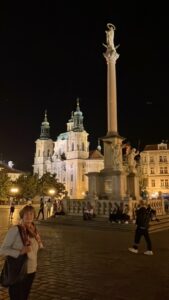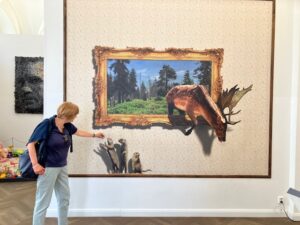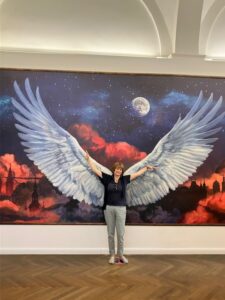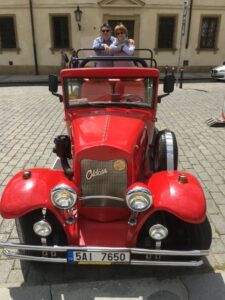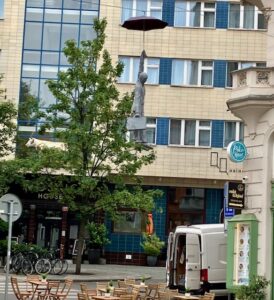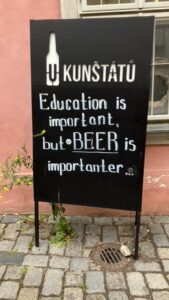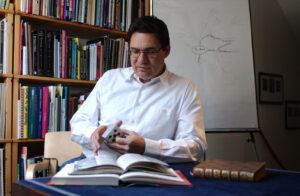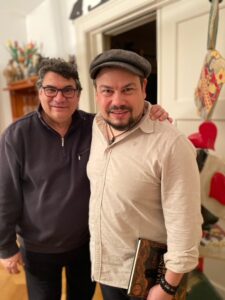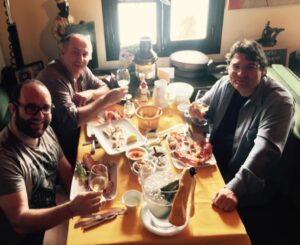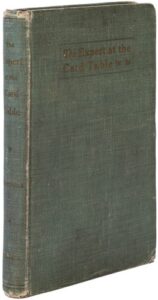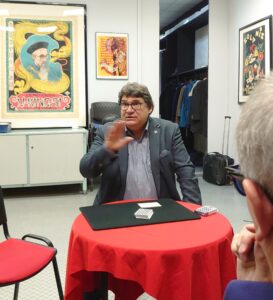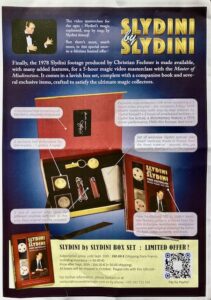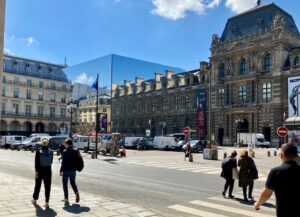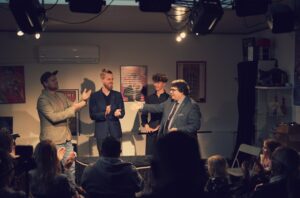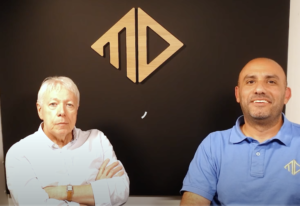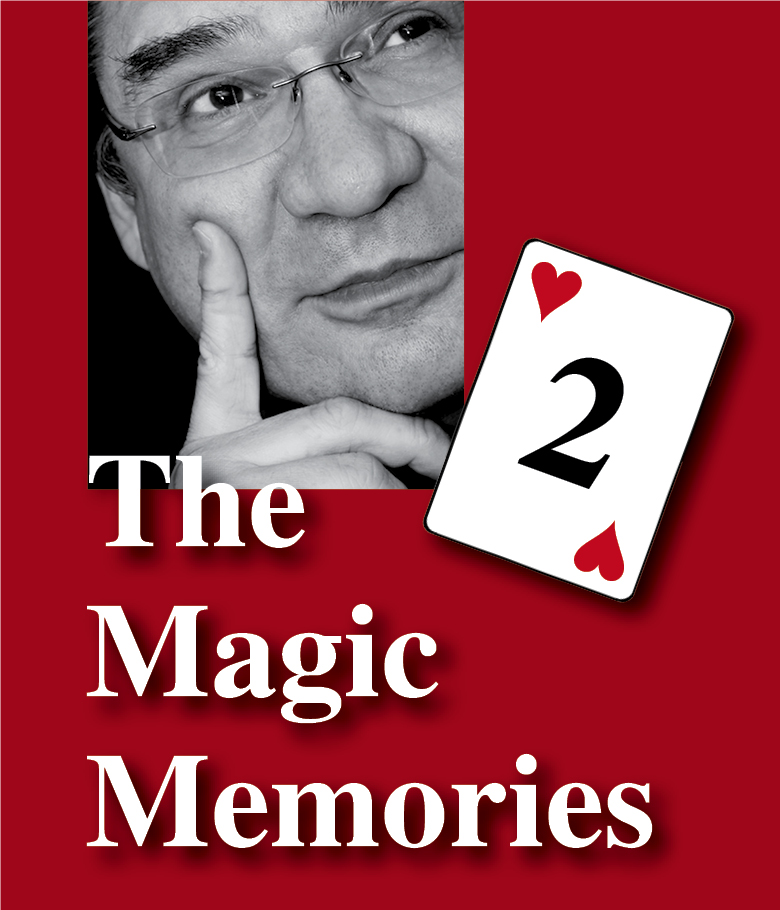
Hello everyone!
Today’s topics are: Hintertuxer Zaubertage 2024 – a report
These are The Magic Memories 186, gone online Sunday, July 21st, 2024, at 0:07h sharp.
All The Magic Memories from 2021, 2022, and 2023, including the Magic Advent Calendar from 2020, can be found HERE.
Hintertuxer Zaubertage 2024
I am back from this most unusual and unique “magic convention”; as promised here are a few impressions.
First of all I should say that this is already the tenth year in a row they book me for that event, interrupted by three Covid Years, and always in combination with two or three other magic colleagues.
In the past I have done this together with Markus Zink, Jörg Alexander, Christopher Borer, Thomas Otto, Alex Ray, Wolfgang Moser, and several others, all highly qualified performers and workshop instructors. I do not even try to understand why they keep asking me back year for year… it probably is because I have not yet drunk myself through their exquisite wine list 🙂
The Set-up
There are several things that set this event apart from any other event I have attended in my magical life.
First, it takes place in a location where “fox and hare say goodnight to each other”, as a German idiomatic expression says, meaning “in the middle of nowhere”, which is actually at the end of a valley, at a height of ca. 4’500 feet, that is limited by a huge glacier that allows skiing all year round.
This again means that once you are stuck in that beautiful four-star-plus hotel, you will not move away from there for the entire duration of your stay.
At almost all other conventions attendants get off in all directions to go to restaurants, bars or shows (Las Vegas), but here everyone gathers in the lobby and the bar, and the magic goes on until the last falls from the chair…
 View from hotel room
View from hotel room
Second, the hotel, which boasts a spa with swimming pool, sauna, etc. , offers full meals, one of the best breakfast buffets I know (and believe me I know A LOT), with exclusive regional specialties, virtually all made by hand, including half a dozen breads, salads, sausages, home-made jams, juices, and a large etcetera.
Then they have what they call a “Late Lunch Buffet” which starts at 2pm and could keep you busy for hours, plus all-day free soft drink, coffee and tea… and that is just the lead-in to the seven-course dinner.
What is absolutely fantastic about it is that unlike what sounds like the food offer of a luxury ocean liner, this is all in small portions, so that you do not gain weight even by a gram, not even I do!
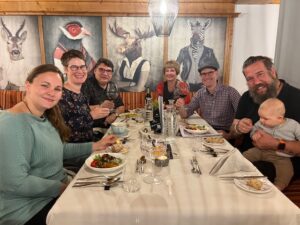
Third, the attendance is limited to about twenty people. This year, due to the European Soccer Championship and other conflicting activities, we had only thirteen participants, which we split into two groups.
Fourth, the program ensures that every participant receives individual attention and there is lots of time to discuss all aspects of magic if you are so inclined.
This year’s artists and workshop conductors, beside myself, where Pit Hartling, who needs no introduction, and to me is one of Germany’s top magician, with unequalled skill, originality, and performance abilities, the three qualities which make up the Artistic Trinity; I consider him a genius, who has only one fault, as he drinks apple juice instead of wine for dinner 🙂
The second artist this year was Kai Borchers, Kalibo, a street performer with lots of experience working in other venues, too, such as cruise ships, and whom I had never heard of before, but who very pleasantly surprised me with his human qualities and his artistic competence.
I think we made up an ideal team to teach and perform magic.
Night Before Party
Although the activities start on Thursday mooning, due to the location, everyone is already there the night before.
Years ago, when they first booked me, it was just an informal welcome affair with drinks, but since I cannot not do magic 🙂 I immediately suggested that I would give a “Night Before Lecture”, which I did for the next years, each time on a different subject, and reduced to ca. one hour.
This year I asked Pit and Kai if they wanted to join in, and what a good idea this was, as Pit started out with a twenty minute card act that floored everyone present, at the same entertaining them royally. This blog is too short to tell you about the effects he did, but believe me, they were all outstanding.
I did an introductory talk to the subject I was going to treat in my workshop, namely Stand-up Card Magic, and as a finale did my Card Stab (“Stickler” from my Stand-up Card Magic), a trick which would serve as guiding theme to discuss the various problems of performing standing-up in front of an audience.
In my short talk I handed out my contact sheet to all attendants and explained how I use it to make sure I get all the necessary conditions needed for a successful performance. This is as important as the tricks and their performance, in my opinion and professional experience (see my comments below in the section “Saturday Night Gala”).
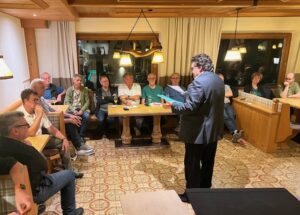
Kai then closed the 75-minutes explaining what he would discuss in his workshop, and performing his street-version of the Endless Loop with a captivating presentation.
After that the hosts welcomed all with a coupe of real French champagne (is there another one?), a vintage Moet Chandon, served from a magnum bottle… that tells you the class of the affair.
The Program
With three workshop instructors and thirteen participants leaves a lot of possibilities for magical interactions and teach-ins.
Thursday and Friday mornings started at 10:30 with each participant taking a 40-minute private class with one of us instructors. This is a very successful unit I introduced last year, where each participant can ask any type of question, discuss a problem, get a personal coaching. etc.
After a one-hour break each group attends a three-hour workshop on a specific subject; this goes from 1pm to 5 pm, interrupted by a one-hour break for “Late Lunch”, and taking place on Thursday, Friday, and Saturday.
After that most take some time off with their families who accompany them, in the spa, sauna, swimming-pool, etc., only to meet again at the bar for drinks at around 7pm, in order to go to dinner a little after.
At 10 pm on every day there is an activity: Thursday has a 75-minute Q&A Session, where every participant writes three questions on three billets, which are subsequently drawn by each instructor, who then tried to answer within three minutes. That is always great fun, but also instructional.
Friday is a special night, were most of the participants perform in a kind of open show they organize all by themselves, to an audience of ca. forty people made up of the hotel guests, who get a free magic show, and the rest of us. There is always a lot of excitement around this, and my impression is that this is what they enjoy most, at least some of them.
Saturday Night Gala
One of the highlights for everyone is the final gala on Saturday night that officially closes the three-day event.
It starts after dinner at 10 pm and is in its entirety carried out by the workshop instructors, one of which acts as the MC, a simple but efficient formula.
The real challenge of this part is that it takes place on a floor at the end of a beautiful hotel lobby, which has not been constructed for visual performances, as most hotel lobbies are not, of course.
However, thanks to years of experience as a professional working in practically all conceivable situations, and with the help of the hotel staff, we managed to shift around the various types of seats, bar stools, and small tables, so that all of the ca. sixty spectators had a good view on what the artists presented; this, coupled with a good sound system and an adequate lighting, set the stage – forgive the pun – for a successful show.
The only thing that is also needed, especially in such difficult situations, are capable performers who know how to present their tricks and how to interact with an audience, and who also know which repertoire to choose.
This goes to show that it is not enough to be a technical virtuoso and to know a lot of tricks, but it is as important to know what type of tricks work in what type of situation for what type of audience.
Precisely this was part of my three-hour-workshop, besides the tricks and techniques taught, but I wonder how many really understood that…
Back to the gala: Pit Hartling took it upon himself to act as the fil rouge of the show, which he started with a 25-minute segment and his incredible Linking Fingerring Routine, the one he had also done at the Magic Castle and which made several “experts” scratch their heads.
He then topped it with an original take on the Rubik’s Cube.
This was the second time I had seen Pit in a parlor situation, and found him as brilliant and at ease with the audience as he is in a close-up situation, where he is simply world-class.
After a lovely and emotional introduction by Pit, I was on next and opened with my interpretation of Shigeo Takagi’s Rope Routine, a piece that has been in my repertoire for the past thirty plus years.
It is one of the few pieces in my repertory that plays equally well in front of a dozen people in a private home, as it does before an audience of 800 on a large stage.
The routine, which after an introductory sequence of seven (!) visual effects that last two minutes, continues with an assisting lady who is kept busy in several surprising interactive effects, ending with her performing a restoration to her own amazement and to the entertainment pleasure of the audience. Although the total of twelve effects have meanwhile become a standard of rope magic acts, I know how much time, thinking, and experience it took me to bring it to the present form, with a multi-lingual presentation inspired by Paul Potassy, and with a pacing that can keep a sophisticated audience’s attention for eight minutes – that is not an easy matter.
Also, I have developed strategies that keep it “fresh” even after having done it for over thirty years. Among other things, I do this by always thinking of Heraclitus, who said about the passing of time: “You never step twice into the same river.” It is exactly the same for magic, just a bit different…
Had I known, years ago, how this routine would form part of my magical career that has virtually taken me around the world, I would gladly have paid $10’000 for it. This is also true for some other pieces, among them the Card Stab I do, and with which I finished my part and which lasted all in all a bit over twenty minutes.
Pit came back and introduced Kalibo, who did over twenty minutes with just the Cups & Balls! When he told me he would do this before the show, I was very skeptical about its success, but after having seen him (he worked without a mike!), I gladly admit that his performance was superb, with a very unique style, yes, a bit loud, but perfectly in sync with his street-performer persona.
I had only seen Joaquin Matas do such a long routine, years ago, from the Minguet, the earliest Spanish magic book from 1733, as the finale of a talk on old Spanish magic books I did together with Toni Cachadina, Jesus Etcheverry and Manolo Tena.
I will try to dig out the video of it for one of the upcoming The Magic Memories (I hope I will not forget…)…
Anyway, Kalibo did a great job, and together with Pit and myself we were able to offer a very divers show, with different performing styles and different types of tricks.
Needless to say that the audience in that remote corner of the Tirolean Alps did not expect this type of show, and therefore reacted sufficiently enthusiastic about it to confirm to the three of us that we are in the right kind of profession 🙂
Like every year, the gala ends with the “graduation” of the participants: Each gets to come forward and receives a nice certificate of attendance, together with a photo with the “stars” 🙂
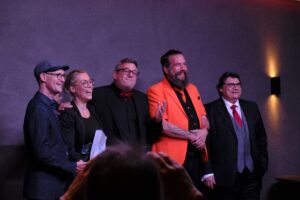
After that the bar is open into the wee hours of the morning, where there is more chatter than magic… and, of course, I am always overwhelmed when Günther and Barbara Stock, the hotel owners and organizers of the Hintertuxer Zaubertage say to me, as they do every year, “This one was the best of them all!”
This has been longer than planned… therefore I leave you at this, and will be back in next week’s The Magic Memories 187, where I promise to offer… a card trick!
Wish you all a successful and happy week,
Roberto Giobbi
